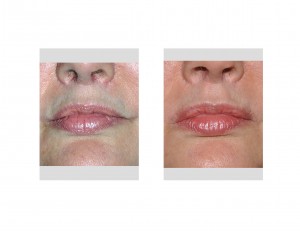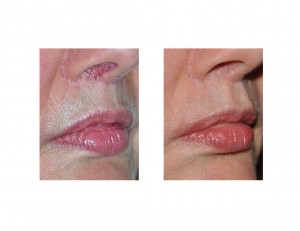Background: The lips have become a significant focus of facial enhancement, largely attributed to not only existing cultural standards but the use of injectable fillers. Adding volume and increasing the size of the lips has become relatively easy and immediate with a few simple sticks of a needle. Increasing the height and volume of the lip’s vermilion can make a previously obscure mouth area much more noticeable and attractive
While both upper and lower lips have vermilion to be augmented, the upper lip has other features that the lower lip does not. The central region of the upper lip, known as the prolabium, is composed of two raised vertical columns of skin and an intervening depression or dimple between them. This area in combination with the vermilion beneath it makes up the central pout of the upper lip. Often many lips, particularly those smaller in size, have near flat philtral columns. Increasing the height of the philtral columns provides an additional, but often forgotten, area of upper lip enhancement
While injectable fillers can be similarly used in the philtrum just like the rest of the lip, the search for morepermanent methods of lip augmentation is ongoing.
Case Study: This 50 year-old female was undergoing rhinoplasty and wanted some lip refinements as well. As part of her lip enhancements, she wanted more prominent philtral columns so there would be a more evident upper lip dimple.



Case Highlights:
1) Lip enhancement is more than just a bigger vermilion or more vermilion exposure. Accentuation of the philtral columns and the intervening dimple can also improve the beauty of the upper lip.
2) Increasing the prominence of the philtral columns, which also deepens the philtral dimple, is done by vertical filling underneath them.
3) Inserting dermal grafts underneath the philtral columns provides an immediate and permanent method of augmentation.
Dr. Barry Eppley
Indianapolis


